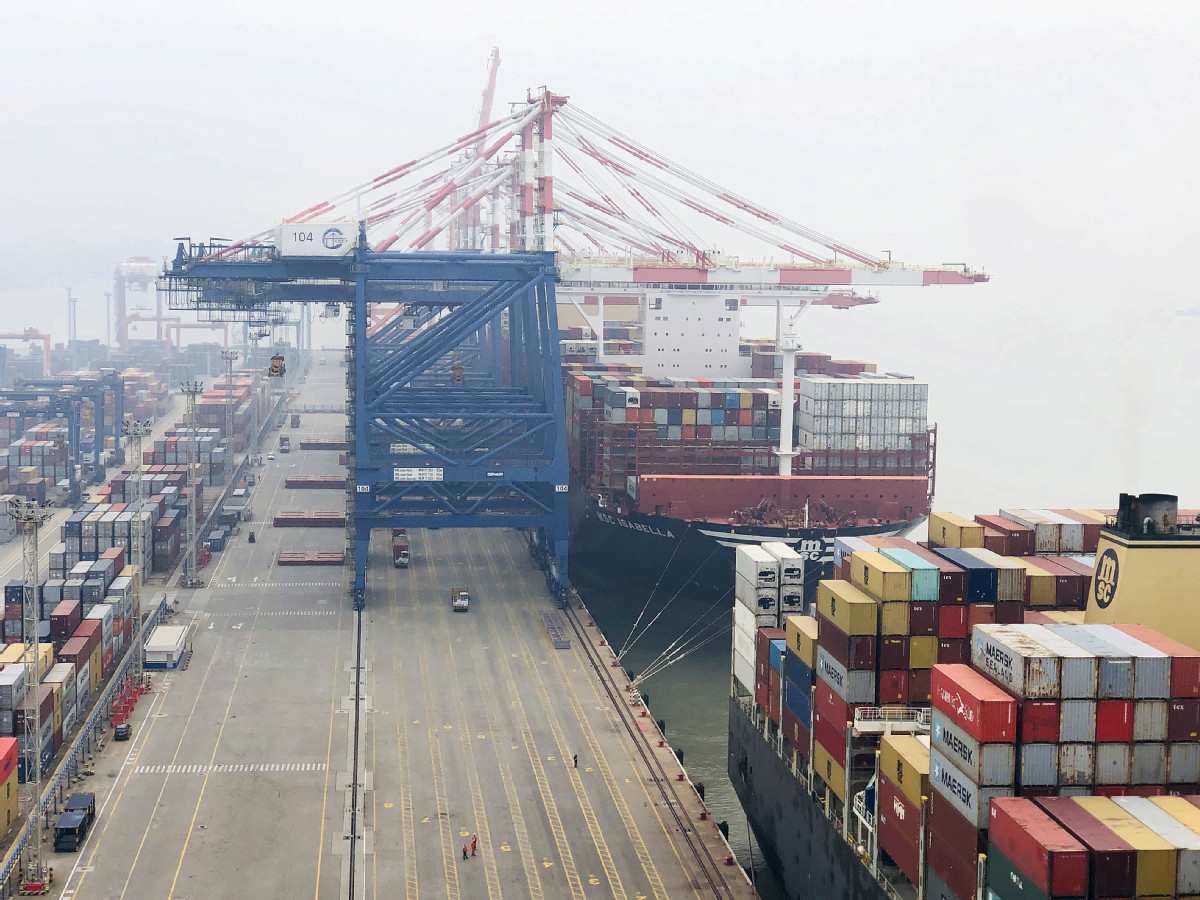World's biggest container ships debut at Port of Xiamen
MSC MINA and MSC SAMAR, two state-of-the-art and the world's largest container ships, with a remarkable lifting capacity up to 22.49 tons or 23,656 TEUs, are 400 meters long, 61 meters wide and 81 meters high.
MSC MINA and MSC SAMAR, two state-of-the-art and the world's largest container ships, with a remarkable lifting capacity up to 22.49 tons or 23,656 TEUs, are 400 meters long, 61 meters wide and 81 meters high. The two mega vessels docked at the Xiamen Songyu Container Terminal running by Xiamen Port Holding Group on Tuesday, breaking the record for berthing capacity, marking another breakthrough in the development of Fujian province, the core area of the 21st-century Maritime Silk Road.

Xiamen Songyu Container Terminal is in the south-east area of Haicang district, and on the continental side of Xiamen, a coastal city in east China's Fujian province. [Photo provided to chinadaily.com.cn]
There are few ports that are able to hold mega vessels, which are demanding of the port's depth of water, vessel management ability, loading capacity, and coordinating backup mechanisms.
The Port of Xiamen, a natural deep water port with depth alongside of 16 meters and five deep-water berths, boasts of its advanced terminal facilities, outstanding waterway management and superior business environment.
Over the past years, the international shipping industry has witnessed a new era of mega vessels. Backed by its advantages, the port of Xiamen seized every opportunity and continuously increased its berthing capacity from 18,000 TEUs in 2013 to today's record-breaking 23,000 TEUs.
MSC SAMAR, the energy-efficient and environmental-friendly mega container ship, carries global shipping routes passing through crucial ports along the areas participating in the Belt and Road Initiative, such as Singapore, Tanjung Pelepas in Malaysia, Colombo in Sri Lanka, Salalah in Oman and Tangier in Morocco.
Before the arrival of MSC SAMAR' s sister ship MSC MINA, Xiamen Songyu Container Terminal ran to its full capacity to meet the needs of about 3,000 containers on the vessel, with the category of cargo ranging from clothing, digital products, seafood and daily necessities, which are expected to be delivered to the countries along the routes.
Last year, the Maritime Silk Road platform provided high quality port services by releasing guaranteed standards of terminal operation, cargo transfer and multimodal port station, further advancing the development of the core area of the 21st-century Maritime Silk Road.
The leading container shipping companies also made active responses to the initiatives of the Silk Road Maritime, calling for achieving shared growth through discussion and collaboration, and contributed their parts to creating new growth engines of the sustainable development of the world economy.
As the world leader in global container shipping industry, Mediterranean Shipping Company's decision amid the coronavirus epidemic to send its mega container ships to the Port of Xiamen shows the port's crucial position in the BRI core area and more development opportunities brought by the Belt and Road initiative.
Ranked the world's 14th-largest container port, the Port of Xiamen pushes forward the resumption of production orderly by utilizing the Silk Road Maritime platform and cooperating with leading shipping players, showing Fujian's capacity and China's sense of responsibility to safeguard global supply chains.

